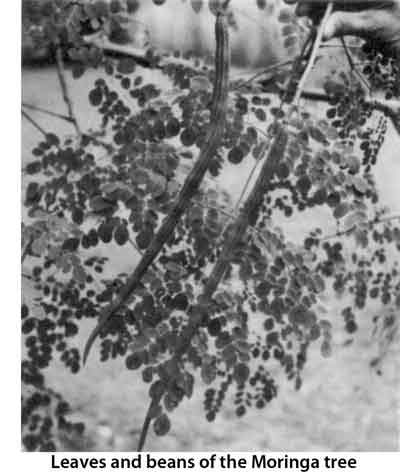
THE MURUNGA OR HORSE RADISH TREE
SCIENTIFIC NAME: Moringa oleifera
FAMILY: Moringaceae
It's wonderful what you find in other peoples' gardens. Visiting some friends of mine the other day, Aubrey and Esme Holzinger of the Cairns Branch, I was shown a fruiting Murunga tree - MORINGA OLEIFERA, A MEMBER OF THE MORINGACEAE family. The fruit is somewhat like a long bean although it is not of the bean family.
H. F. Macmillans Tropical Planting and Gardening, that valuable source of all information on tropical fruits and vegetables, describes the Murunga as follows:
"A short, slender tree, about 8 m high, with small, tri-pinnate leaves, cultivated in gardens throughout south and east Asia. The roots are used as a substitute for Horse-radish, the leaves for vegetable curries as well as for seasoning and in pickles. The unripe pods, around 1 m long, are also used in curries, boiled and sliced like beans. Propagated by seed and cuttings."
In the Cairns district, the tree crops twice a year and is in full crop right now (August).

Now, according to Esme who is an excellent cook, a fact I can vouch for, another way of preparing the beans is as follows:
Harvest the beans while still tender. Peel off the top surface of the skin with a potato peeler. Cut into 5 cm pieces. Boil with onion, turmeric, coconut milk and salt. Simmer until tender. 10- 15 beans take about 20 minutes.
When eating, cut the sections in half and scrape out the soft seeds and flesh. It tastes just like asparagus - absolutely delicious. Excellent with prawn curry and rice. The leaves can be fried or put in soups. Yes, I like going round to Esme's for a meal.
Macmillan also states that the seeds, when crushed, are known to be able to coagulate solids in solution, and thus clear muddy water. One crushed seed is said to be able to clear 90% of the coliform bacteria from one litre of river water within 20 minutes. Now I wonder how they worked that one out.
DATE: September 1995
* * * * * * * * * * * * *
